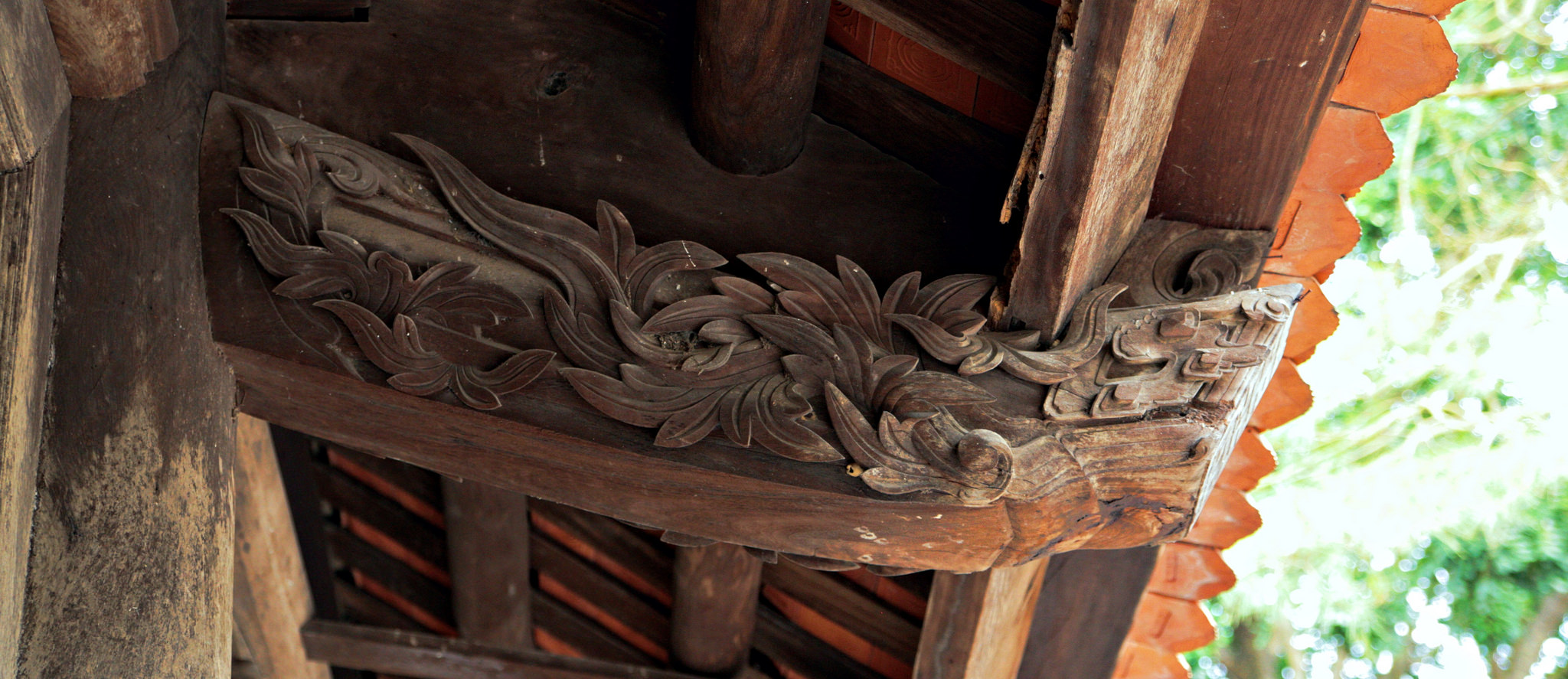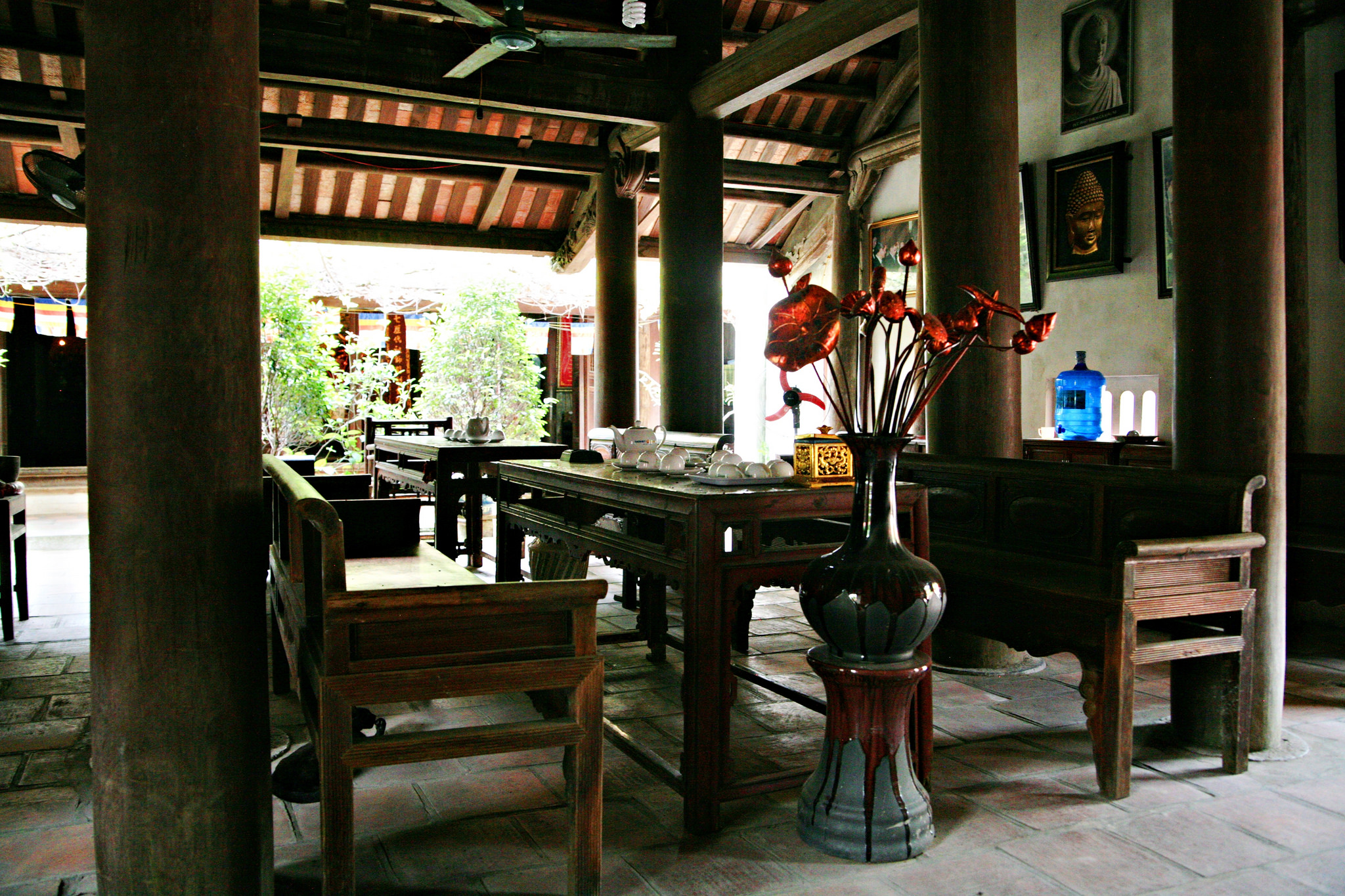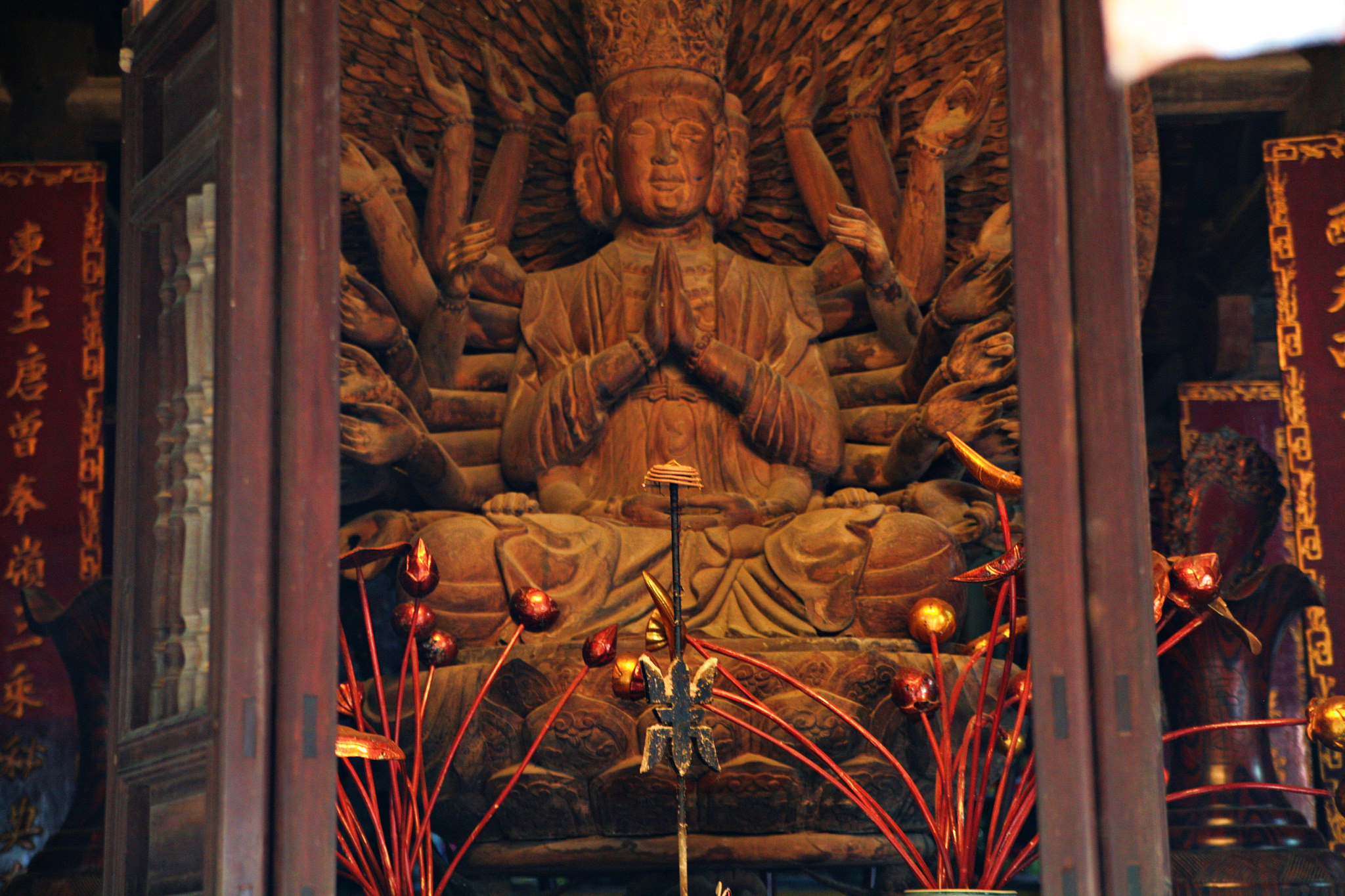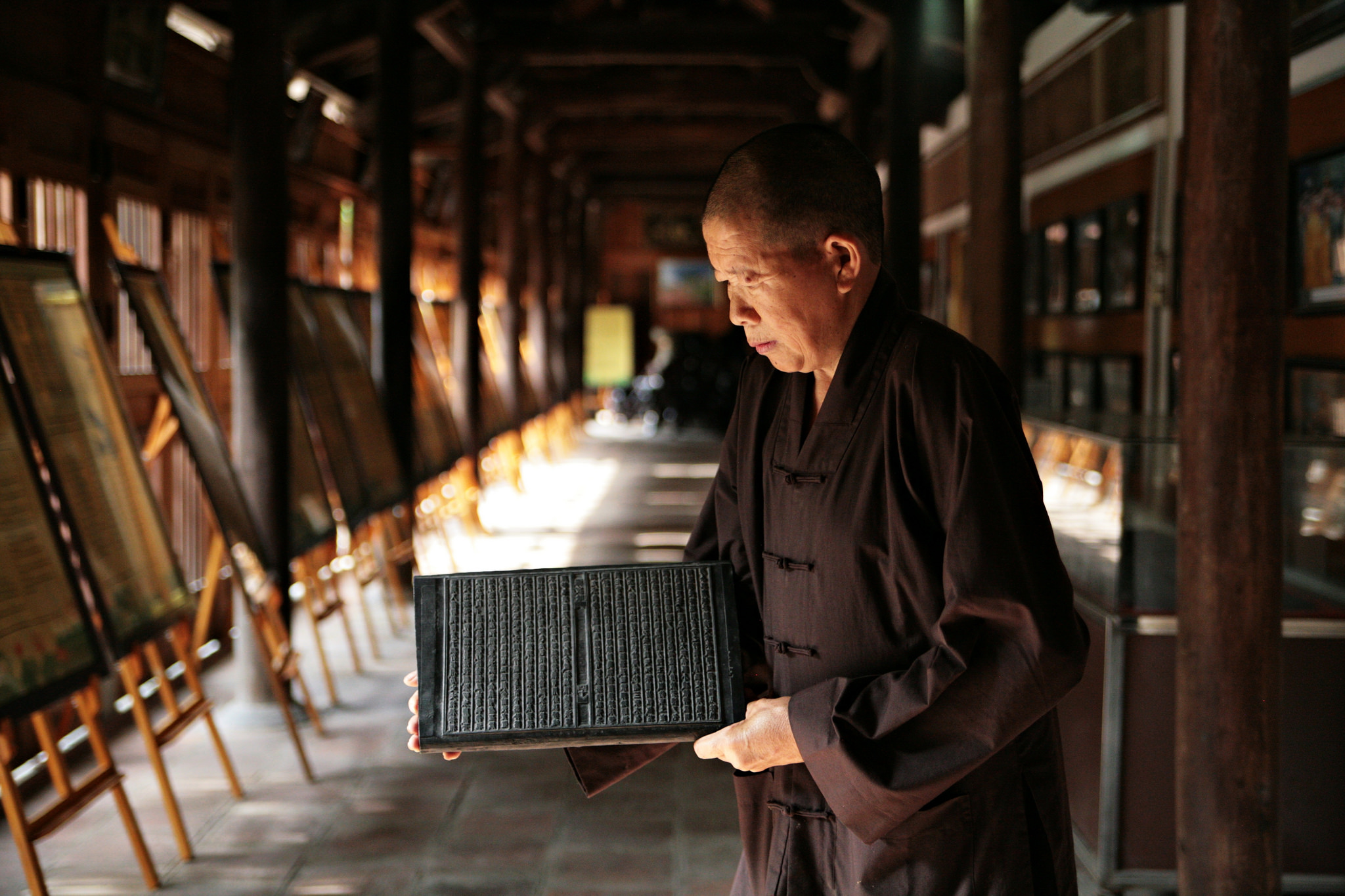The mere mention of Duc La Pagoda is enough to excite awe and honour in the minds of the people of Vietnam – the temple has been in existence for nearly 700 years and holds a collection of 3,000 carved woodblocks recognised by UNESCO as World Documentary Heritage.
Duc La Pagoda follows rules of feng shui for its location. Traditional feng shui highlights that sanctuary structures should be located in a site with a river to the front and a mountain at the back. Duc La Pagoda leans on the Co Tien Mountain and looks over to the Luc River. This location is believed to bring harmony, calm and balance into the structure.
Surrounding the pagoda are vast paddy fields, picturesque villages and the Nham Bien Mountain range, which create a very poetic and mystical feel.
Ancient documents reveal that Duc La pagoda was built in the 11th century during the Ly Dynasty. It was later turned into a training centre for talented monks by three head Vietnamese monks: Tran Nhan Tong, Phap Hoa, and Huyen Quang during the Tran dynasty in the 13th century. The remaining ruins date back to the Le Dynasty and Nguyen Dynasty in the 15th and 19th centuries respectively.
The main architecture of Bo Da Pagoda is composed of four structures lying on a south west axis. The main hall still preserves the architectural style of the Ly Dynasty, especially the decorative symbol of wooden planks and cloud on its arms, while the two-roofed bell tower and the monk’s house clearly display the architectural style of the Nguyen Dynasty (19th century).

Nowadays Duc La Pagoda remains a major centre of Buddhism in Vietnam as it currently keeps a collection of 3,000 carved woodblocks, including some featuring two Buddhist Sutras. Those woodblocks provide valuable information on the formation, development and ideology of Truc Lam Zen Buddhism, founded by King Tran Nhan Tong in the 11th century.



>> To view more wonderful photos from the Duc La Pagoda in a full-size gallery please click this link.
Text and photos by Architectureofbuddhism.com writer Sophia Doan.





